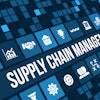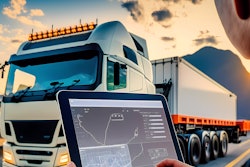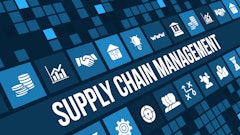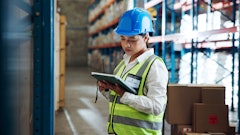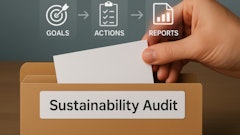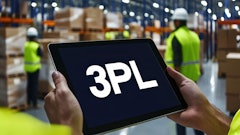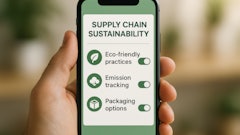
The circular economy has moved from a niche concept to an everyday reality. More people than ever before will now buy secondary or refurbished products as a more affordable and sustainable option.
Efforts to be more circular often focus on isolated measures such as using recycled materials or designing environmentally friendly products. But genuine circularity goes deeper; it requires a comprehensive rethink of systems that allow products to maintain their value and stay in circulation for as long as possible.
Even the most sustainably engineered product will become waste without the ability to trade it in, repair it, or remarket it. These systems create pathways that encourage consumers to part with the products they use and trust that they will be returned to the market, completing the circular loop.
In short – infrastructures are circular, not products. It is system-driven, with carefully designed supply chains and business models. Circularity stems from the infrastructure that supports reuse, repair, and re-entry into the market. That means that supply chain leaders can be the key to more widespread adoption of truly circular models of production and consumption.
How circular models work in practice and the infrastructure required
Several models have emerged to fuel the circular economy. The most widespread approach is trade-in programs, mostly seen in the technology industry, which allow consumers to exchange used electronic devices for credit toward new ones. These schemes keep technology in circulation by encouraging users to pass along rather than discard their old devices. The secondary technology marketplace has evolved alongside these programs, with many platforms now incorporating their trade-in mechanisms.
Another increasingly popular model is "Device-as-a-Service," where companies lease their electronic devices rather than purchasing them outright, using the equipment for a defined period before returning it for replacement, upgrade, or refurbishing. Together, these models are helping to prolong product lifecycles and shift focus from product ownership to long-term value.
Each successful program relies on a robust reverse logistics network for efficient collection, quality assessment, repair, and redistribution to new users.
Most manufacturers initially design their infrastructure only to distribute products one way — out into the market. But circularity requires a rethink. Leaders who want to do this must effectively handle product returns and prepare items for reuse, with end-to-end systems for grading, refurbishment, inventory control, and resale.
Not only does the infrastructure need to exist, but it has to be designed with the user experience in mind. Successful tech trade-in schemes, whether online or in stores, are straightforward to navigate: customers receive clear, attractive offers for their used devices before completing their new purchase, with the used devices collected in a smooth, convenient transaction. Behind the scenes, these companies have built exceptional reverse logistics systems, enabling devices to seamlessly move back into the circular economy.
Other factors that drive circularity's success include consumers' loyalty to specific brands and ecosystems, a balanced pace of innovation making refurbished devices viable alternatives, and widely understood grading standards. But above all, ease of use for a trade-in program remains the most critical factor. If it becomes complicated or inconvenient, customers won't participate.
The technology sector has taken the most significant steps of any industry to build this model, successfully coupling products with trade-in programs and secondary marketplaces. But every sector with a supply chain can learn from what the tech industry has developed and the lessons learned along the way.
How supply chain leaders can advance a circular economy
Circularity thrives when products are reliable across multiple generations, designed for easy refurbishment, built with accessible parts, and supported by long-term software updates.
But the logistics – the behind-the-scenes infrastructure handling grading, refurbishment, and resale – push circularity forward.
Regulation will eventually evolve, but businesses embracing circular models must take proactive steps. Here are some key strategies to get started:
- Optimize reverse logistics
Build frictionless return processes and efficient infrastructure for collection, assessment, refurbishment, and resale. Investing in inventory-tracking tools is crucial to meeting rising demand.
2. Outsource circular initiatives
Partner with specialists to leverage existing systems for grading, refurbishing, managing inventory, and resale at scale. Outsourcing enables businesses to efficiently meet consumer expectations while remaining focused on their core objectives.
3. Limit flash sales
Frequent discount promotions undermine refurbished offerings. Structured pricing and certified, high-quality refurbished goods can attract new customers who might otherwise opt for a lower-end competitive product.
4. Monitor the secondary market
Follow resale market trends closely to anticipate shifts and proactively manage inventory, pricing, and supply.
5. Identify policy and infrastructure gaps
Understand regional regulatory complexities and potential legal restrictions around refurbished goods early to smoothly scale circular solutions.
Systems will define circular success
Circular products don't exist in a vacuum—they depend on the infrastructure built for them.
The future of circularity isn't about the newest products with all the eco-badges. It's about keeping the good ones in use longer — and building the right systems to make that possible.

